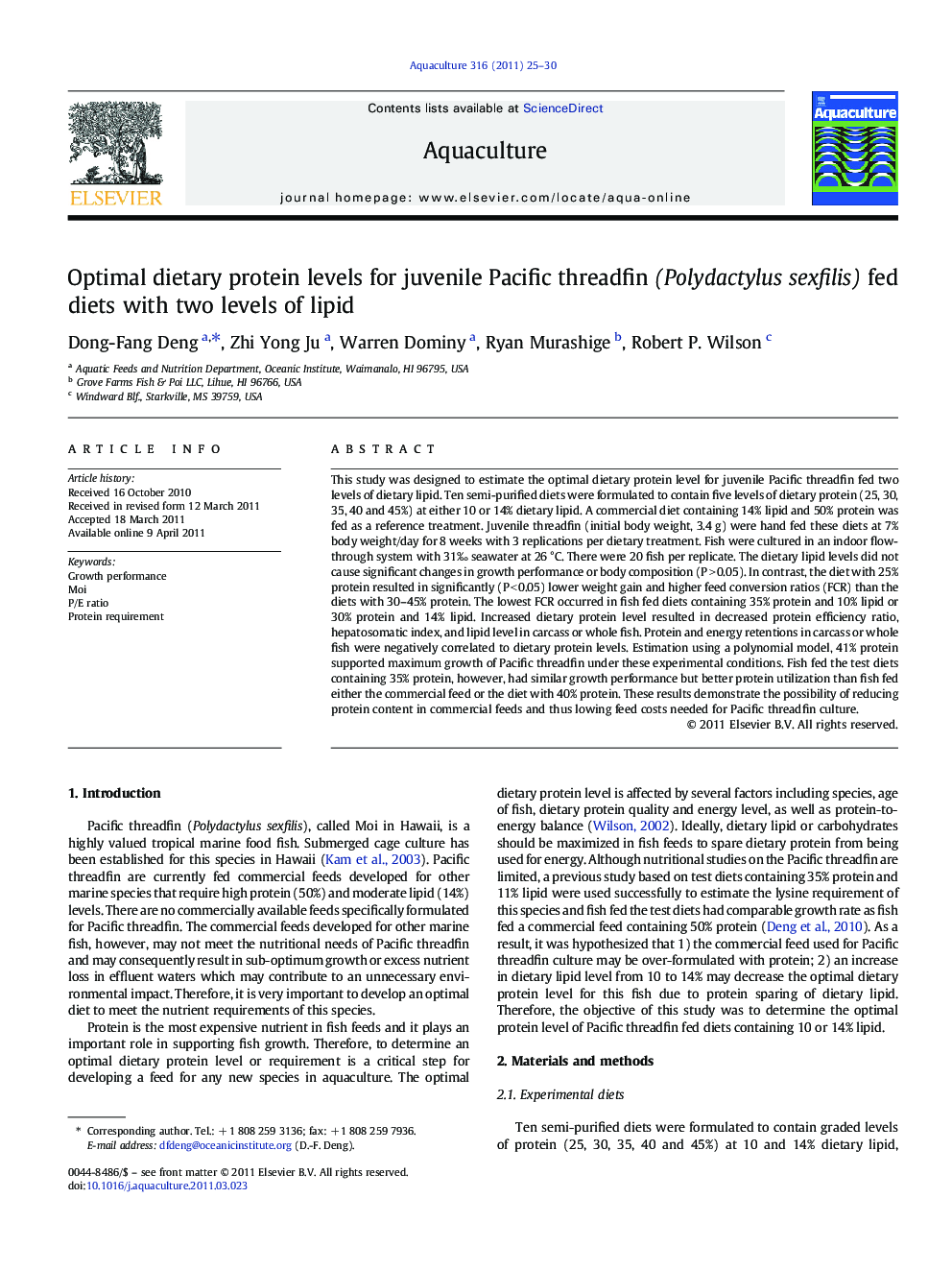| Article ID | Journal | Published Year | Pages | File Type |
|---|---|---|---|---|
| 2422938 | Aquaculture | 2011 | 6 Pages |
This study was designed to estimate the optimal dietary protein level for juvenile Pacific threadfin fed two levels of dietary lipid. Ten semi-purified diets were formulated to contain five levels of dietary protein (25, 30, 35, 40 and 45%) at either 10 or 14% dietary lipid. A commercial diet containing 14% lipid and 50% protein was fed as a reference treatment. Juvenile threadfin (initial body weight, 3.4 g) were hand fed these diets at 7% body weight/day for 8 weeks with 3 replications per dietary treatment. Fish were cultured in an indoor flow-through system with 31‰ seawater at 26 °C. There were 20 fish per replicate. The dietary lipid levels did not cause significant changes in growth performance or body composition (P > 0.05). In contrast, the diet with 25% protein resulted in significantly (P < 0.05) lower weight gain and higher feed conversion ratios (FCR) than the diets with 30–45% protein. The lowest FCR occurred in fish fed diets containing 35% protein and 10% lipid or 30% protein and 14% lipid. Increased dietary protein level resulted in decreased protein efficiency ratio, hepatosomatic index, and lipid level in carcass or whole fish. Protein and energy retentions in carcass or whole fish were negatively correlated to dietary protein levels. Estimation using a polynomial model, 41% protein supported maximum growth of Pacific threadfin under these experimental conditions. Fish fed the test diets containing 35% protein, however, had similar growth performance but better protein utilization than fish fed either the commercial feed or the diet with 40% protein. These results demonstrate the possibility of reducing protein content in commercial feeds and thus lowing feed costs needed for Pacific threadfin culture.
